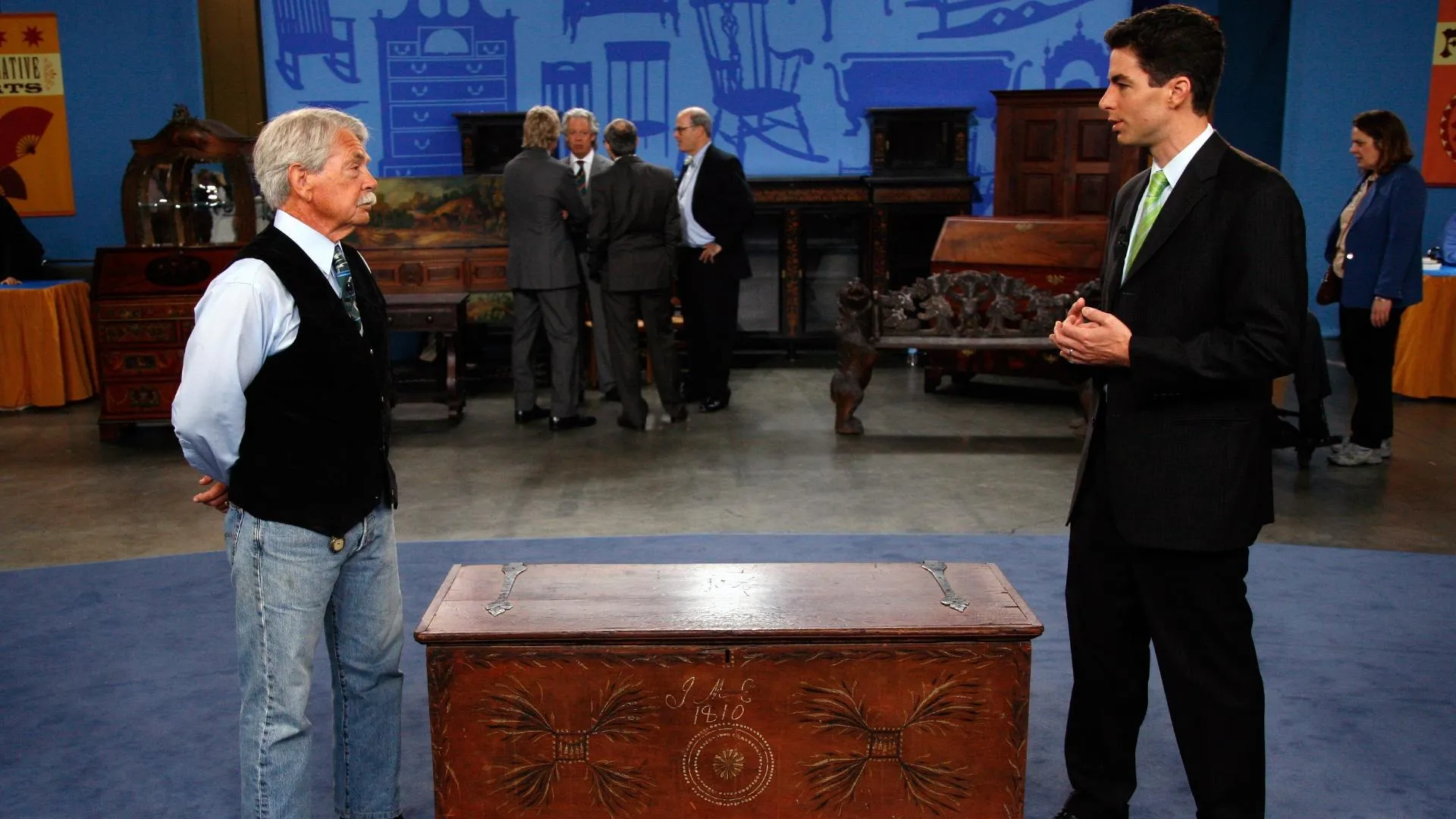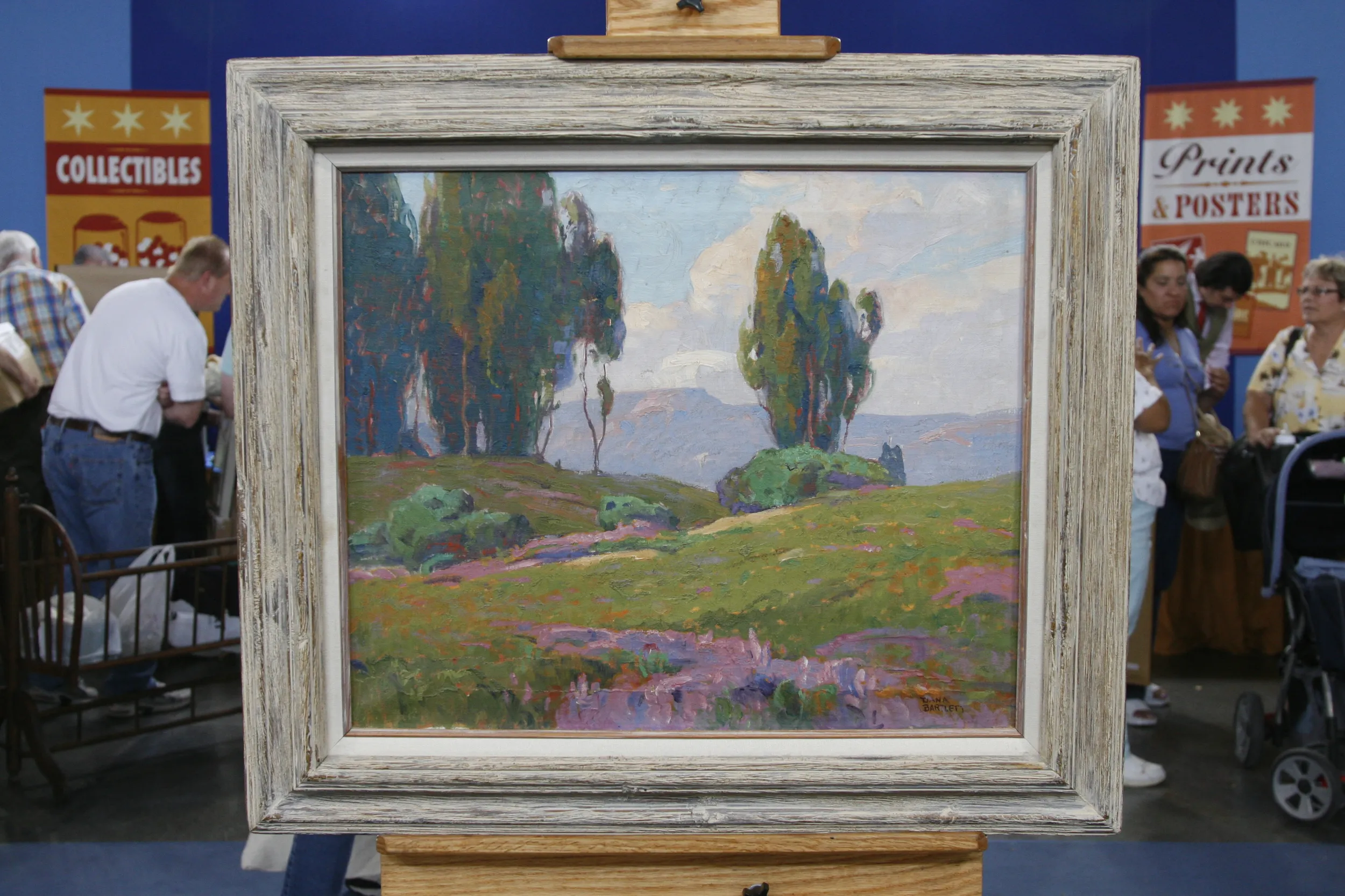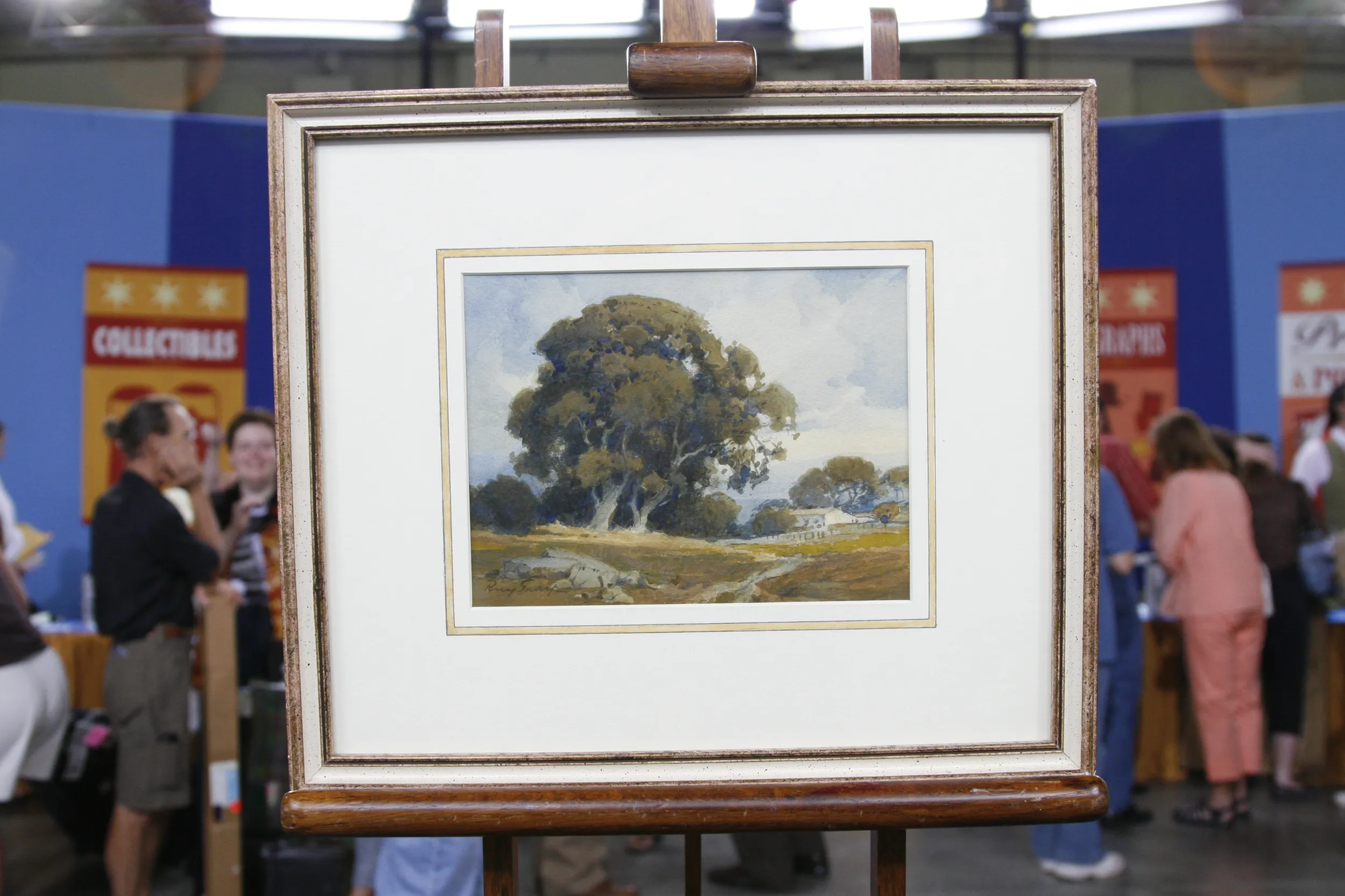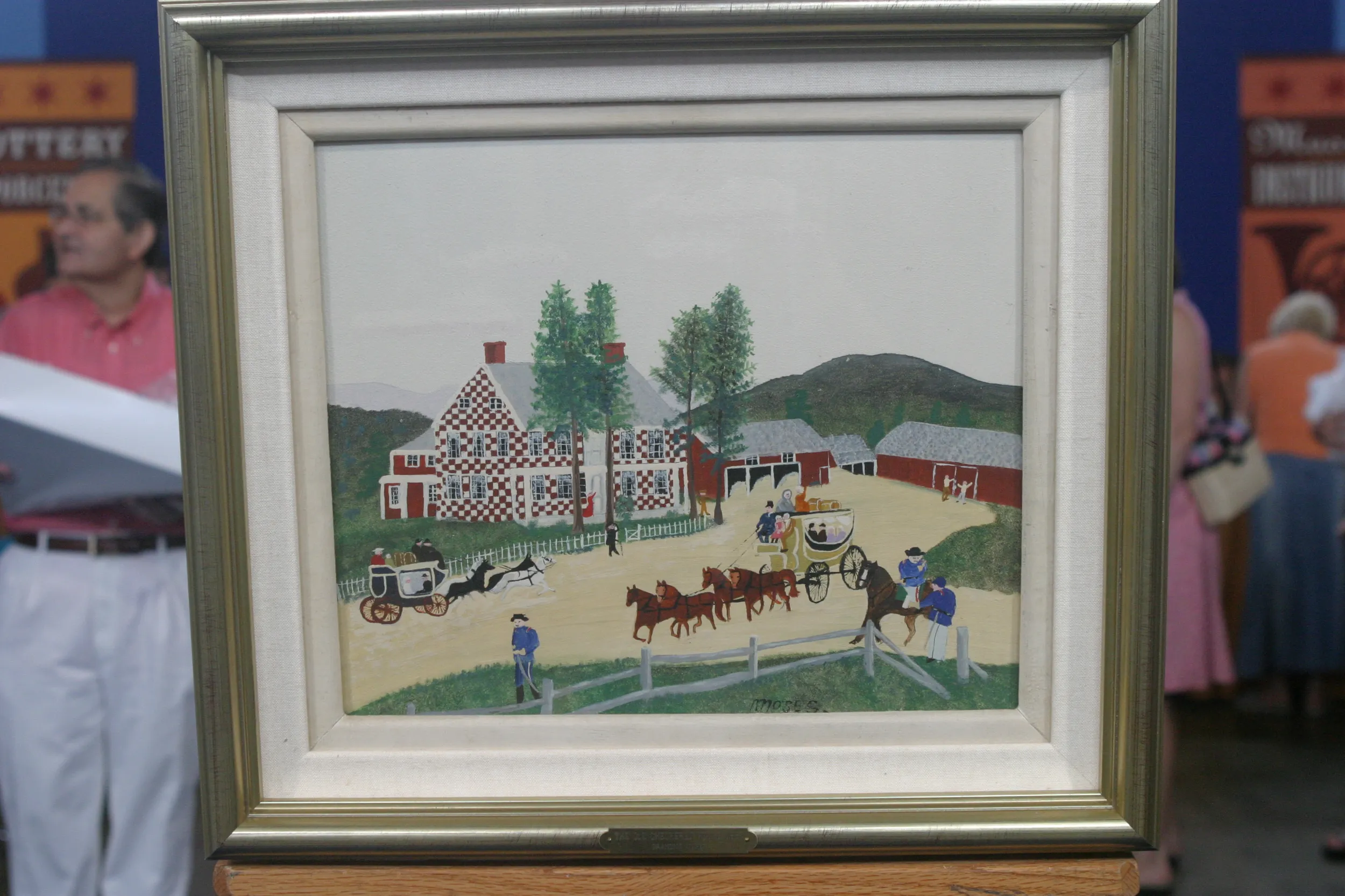APPRAISER: You've brought us a wonderful painting by an American artist named Willard Leroy Metcalf. And what do you know about the artist?
GUEST: I know that he was around New York, an upper-- lower Hudson Valley painter, and that he did a lot of work like this. I've seen some online. He did some work on Central Park, which looked not unlike this. And beyond that, I know he's dead.
(both laughing)
APPRAISER: Well, that's true, that's true. He actually was born in 1858 and died in 1925.
GUEST: Okay.
APPRAISER: And as opposed to being a Hudson River Valley, or Hudson River School artist, he actually is one of the two premier American Impressionist landscape painters.
GUEST: Ah.
APPRAISER: And he was from Lowell, Massachusetts.
GUEST: Uh-huh.
APPRAISER: And is really associated with the Boston School there. Like many of the Impressionist artists, he went to France to study.
GUEST: Uh-huh.
APPRAISER: And then he came back and worked in, mostly in the Boston area, but also in Maine and the Berkshires, Cornish, New Hampshire, Vermont, and Old Lyme, Connecticut. And I think this was probably done in Old Lyme, because there are other examples that show the rolling hills and the rocky landscape like this.
GUEST: Interesting, interesting.
APPRAISER: In 1898, he became part of a group called The Ten. And this was composed of ten Impressionist painters, including William Merritt Chase... Yep. Frank Benson, Edmund Tarbell, and the other premier Impressionist painter, John Twachtman.
GUEST: Okay.
APPRAISER: So he was in quite a distinguished group.
GUEST: Yes.
APPRAISER: Now, Metcalf really was almost purely known for doing landscapes. You rarely see any figurative work by him. And around 1901, he suffered a depression after his wife had left him...
GUEST: Got it.
APPRAISER: ...and his best friend, Twachtman, had died. And so after that point, he almost has a revival. And he changes his palette and his brushwork. So, this painting, which is signed W.L. Metcalf and dated 1906...
GUEST: Right.
APPRAISER: ...was done after the Depression and into this new era. And what he's doing at this time is using very pastel colors.
GUEST: Uh-huh.
APPRAISER: So as you can see...
GUEST: Right, right.
APPRAISER: ...we've got wonderful pastel colors. He's letting the canvas show through in certain areas to show dimension. And he also is using sort of a feathery, brushy technique here. Now, tell me how you happened to acquire this.
GUEST: Well, this was found in the attic of my late wife's grandfather's house. He was the chairman of the board of the Pennsylvania Railroad.
APPRAISER: Wow, oh, wow.
GUEST: He had lots of paintings. This was in the attic, and I was up there stomping around one day...
APPRAISER: (laughs)
GUEST: And somebody said, "Oh, don't step on that," because it was face down.
APPRAISER: Right.
GUEST: And they picked it up, looked at it, and said, "Well, why don't you take this?" So I did. And it was at the time surrounded by the ugliest rococo frame you've ever seen, which then my late wife replaced with this pecky cypress.
APPRAISER: Right, and that, that particular frame that you got rid of is actually the type that the artist would probably have, have used on it, because...
GUEST: Then I probably shouldn't have thrown it away, but...
APPRAISER: Probably not. And also, there's a title on the stretcher on the back, which...
GUEST: Yeah. Well, I think, I think it's "Reflections of Spring."
APPRAISER: Right. Have you ever had this evaluated?
GUEST: Yes, I acquired this probably in 1966, and in 1968, my wife, who was an art major, took it in to an art museum, and they cleaned it up, and she said, "By the way, what do you think it's worth?" And they said, "Oh, well, about $3,000."
APPRAISER: Well, a painting like this, on the retail market, would generally sell for $150,000.
GUEST: (laughing) Wow, that's pretty good for something that was free.
APPRAISER: I think so. I think so.
GUEST: Holy smokes.
APPRAISER: Yeah, he's very, very collectible.
GUEST: That is, that... That, that's way over the top.
APPRAISER: Yeah.
GUEST: And fortunately, I've been hanging it out of the sunlight.
APPRAISER: Well, that's good, that's good.
GUEST: (laughs)
APPRAISER: I also think it could benefit from a cleaning. It's a little dingy from the varnish probably yellowing.
GUEST: 35 years.
APPRAISER: And you've got a couple of little paint losses here along the edge.
GUEST: Yeah, yeah.
APPRAISER: And the frame that you found it in, if it were the original, then the value of the painting might be more by, let's say, another $10,000, depending on the quality of it.
GUEST: Right, yeah.
APPRAISER: Well, thank you for bringing such a wonderful painting in today.
GUEST: Thank you for enlightening me, I enjoyed it.
APPRAISER: Oh, good. Great, thank you.
GUEST: I was afraid you were going to say, "Oh, nice $3,000, but it's actually worth 12 cents."
APPRAISER: Oh, no, no, no. (laughs)








